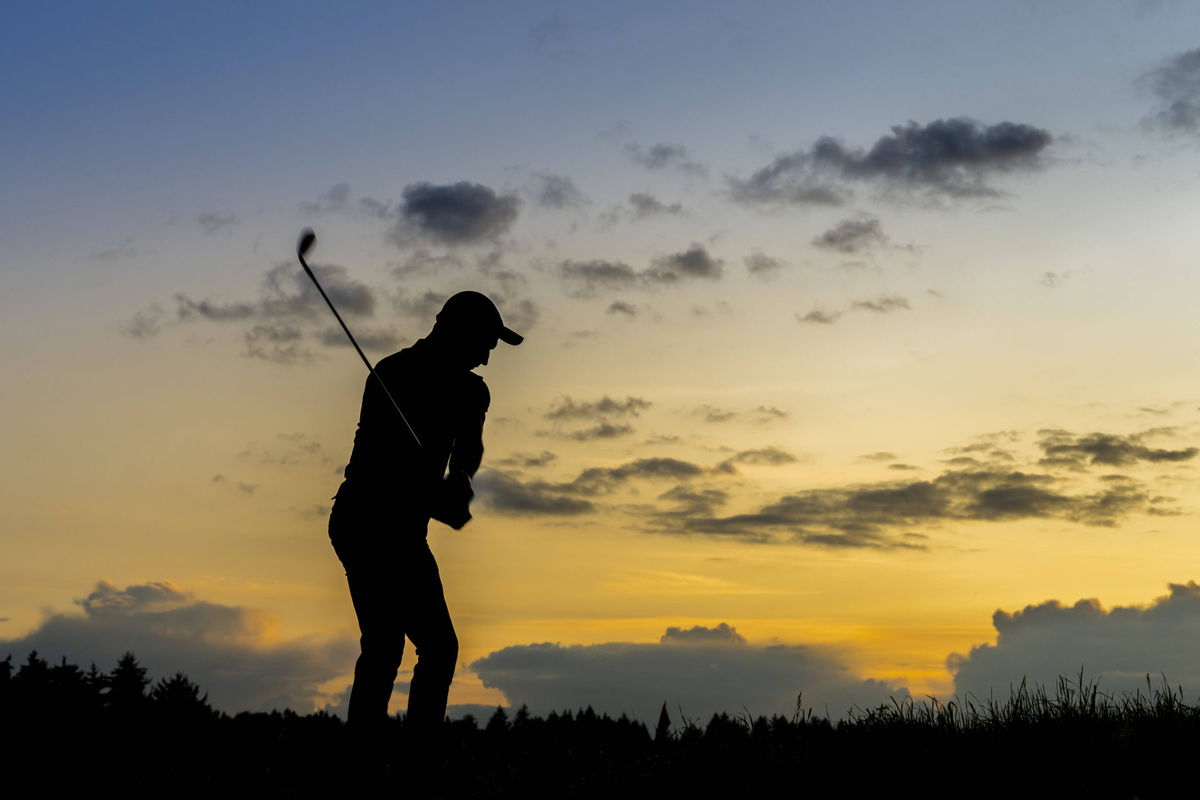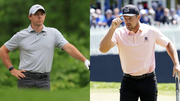
Imago
Silhouette of man playing golf at dusk model released, Symbolfoto, STSF03725. Credit | Imago

Imago
Silhouette of man playing golf at dusk model released, Symbolfoto, STSF03725. Credit | Imago
It is common for amateurs of a sport to have misconceptions about how the pros approach the game. And the onus is on the pros to build conversations around the same and bring some clarity to the matter at hand. A PGA Tour Pro recently started one such conversation about the presumed confidence levels of PGA Tour Pros.
Watch What’s Trending Now!
Recently, the Haskins Award winner of 2013, tweeted about how amateurs tend to assume that the pros play with supreme confidence and conviction. He tried to explain how it’s not so, by taking Tiger Woods as an example. The 30-year-old golfer touched upon the psychological inconveniences that Woods sometimes faces, and the conversation turned into a short debate in the comment section about Woods’ chipping yips. Here is how the discussion went.
Top Stories
LIV Golf Braces for Another Possible Exit in Wake of Brooks Koepka Departure

Rory McIlroy Makes Feelings Clear on Bryson DeChambeau’s PGA Tour Return: ‘Have Lost…’

Amanda Balionis Confirms New Relationship Ending Months of Rumors

Bryson DeChambeau Gives Reality Check to Phil Mickelson When Asked to Select His Mount Rushmore for Golf

After Brooks Koepka, Another Pro Cuts All Ties With LIV Golf & Publicly Backs PGA Tour

ADVERTISEMENT
Tiger Woods’ chipping yips — psychological or physical?
The Seoul-born golfer Michael Kim recently tweeted about how anxiety is a part of the game, irrespective of the skill level and experience of a player. He claimed that being a pro does not offer a free pass to escape anxiety. Kim explained how this has something to do with the hunter-gatherer history of humanity. In his own words, “Our brain will always try to look for worst case scenarios because that was the best way for survival back in our hunter gatherer days.”

Imago
PGA, Golf Herren The Open Championship – Practice Round Jul 12, 2022 St. Andrews, Fife, SCT Tiger Woods talks with the media during a press conference, PK, Pressekonferenz prior to the 150th Open Championship golf tournament at St. Andrews Old Course. St. Andrews St. Andrews Old Course ENTER STATE SCT, EDITORIAL USE ONLY PUBLICATIONxINxGERxSUIxAUTxONLY Copyright: xMichaelxMadridx 18687385| Credits: Imago
He then took the example of Tiger Woods to discuss how his anxiety made him vulnerable to chipping yips.“Tiger could rarely ever hit the first fairway unless it was an iron, and even had the chipping yips for a while.”
ADVERTISEMENT
A golf fan in the comments stated how the yips – involuntary muscle twitches – occur because of Woods’ f***ed up back. In response to the claim, Kim questioned the commenter why these spasms magically occur only when Woods is trying to chip.
Following his question, he received a screenshot that quoted golf instructor David Leadbetter. The quote said that Tiger Woods experienced chipping yips because of physical issues, and not mental. Kim confidently acknowledged it and added that most psychological issues begin with a physical trigger. He asserted that the mental issues make these triggers worse and result in a condition.
ADVERTISEMENT
The conversation had another discussion that caught our attention. The discussion was about the key difference between amateur golfers and pros.
ADVERTISEMENT
The major difference between amateurs and pros
Another comment in the thread claimed that the major difference between amateurs and pros is how they handle the putting. The commenter described a scenario where the player has hit the ball 30 feet to the safe side. In this scenario, the commenter claimed, pros have a higher success rate in putting it skillfully. Kim disagreed.
According to Kim, the amateurs, or ams as he calls them, do not have more trouble with putting. In his opinion, amateurs struggle a lot more to hit it 30 feet to the safe side than to putt it successfully. “The biggest difference is tee to green. Putting isn’t as big of a factor. It’s a common misconception.”
Have you experienced anxiety? What are your thoughts on Kim’s perspective? Let us know in the comments!
ADVERTISEMENT
Watch this story: As His Winless Streak Prevails, Phil Mickelson Wraps Up a Controversial Week With an Extremely Humble Gesture
ADVERTISEMENT
ADVERTISEMENT
ADVERTISEMENT

